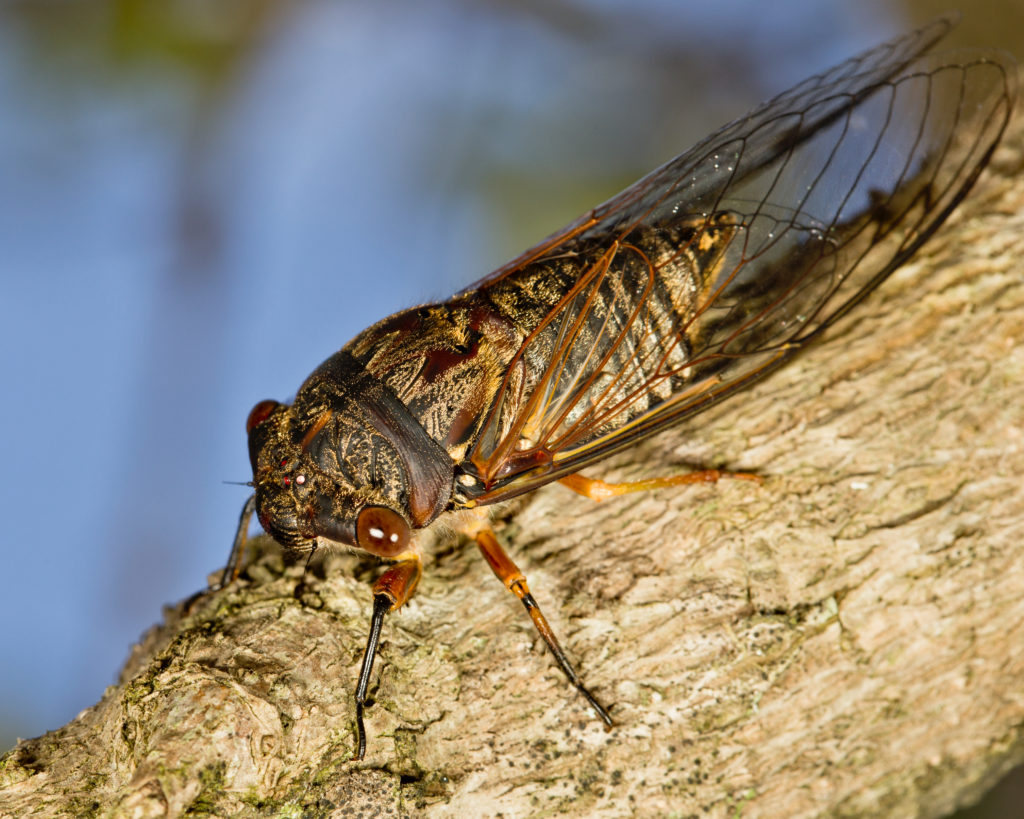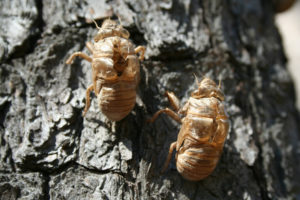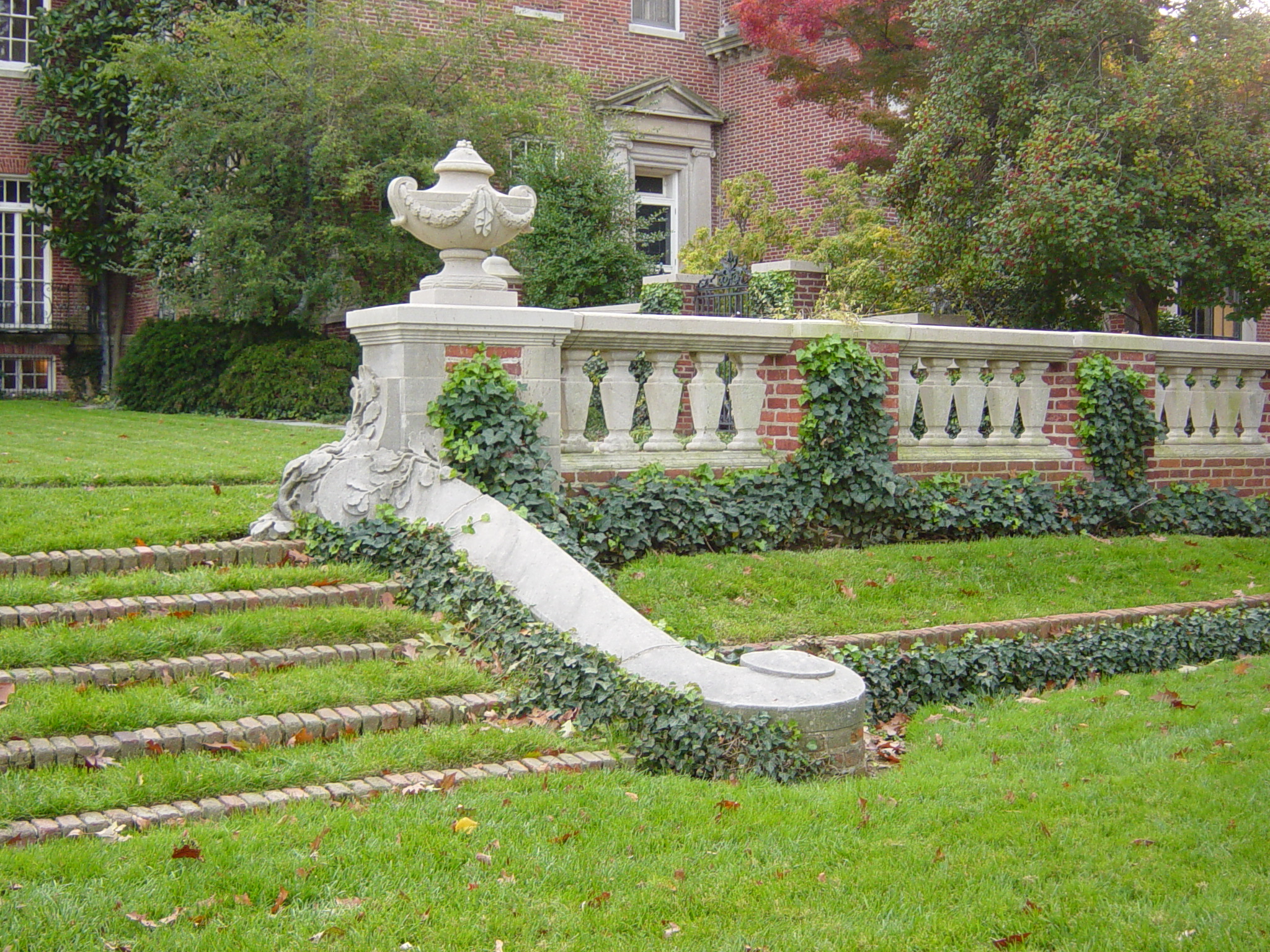
Let’s Chat About a Cicada’s Life Cycle
 Once soil temperatures warm to 64 degrees, 17-year cicadas begin emerging from any wooded area with undisturbed soil (no construction since the previous emergence). First, they shed their juvenile shells, then move to the treetops to mate. Anyone who has memories of the 2004 emergence will recall the loud buzzing sounds the male uses to call female cicadas. After mating, the females slice into the underside of tree branches to deposit their eggs. This is where sapling trees can be damaged to the point of losing the tree. Andy notes that, for larger trees, this is one of nature’s methods of pruning. Cicadas do not cause lasting harm to established trees. After ten weeks, the larva hatch and drop to the ground, burrowing back underground to feed on the tree roots for another 17 years, and thus the cycle continues.
Once soil temperatures warm to 64 degrees, 17-year cicadas begin emerging from any wooded area with undisturbed soil (no construction since the previous emergence). First, they shed their juvenile shells, then move to the treetops to mate. Anyone who has memories of the 2004 emergence will recall the loud buzzing sounds the male uses to call female cicadas. After mating, the females slice into the underside of tree branches to deposit their eggs. This is where sapling trees can be damaged to the point of losing the tree. Andy notes that, for larger trees, this is one of nature’s methods of pruning. Cicadas do not cause lasting harm to established trees. After ten weeks, the larva hatch and drop to the ground, burrowing back underground to feed on the tree roots for another 17 years, and thus the cycle continues.
How Should You Protect Your Landscape From Cicadas?
Plants and flowers are not a food source or host to cicadas, so no worries there! The larger trees won’t see permanent damage, so no worries there, either! What should be on your radar? Anything from tiny little saplings to 4″ caliper trees you’ll want to protect. Intreegue recommends covering them with netting or framing to make them inaccessible to mating females. We are currently advising all of our clients undergoing installation this spring. We will guide them on which trees will require protection and how to do so. You may also hold off on selecting your trees until next spring or contact your local tree expert for framing devices and materials for protection from cicadas. Most are knowledgeable and prepared for the cicada invasion!
Intreegue Design is a landscape architecture firm offering the added value of expert horticulturists and ISA-certified arborists on staff.
Contact us with questions or project inquiries.





